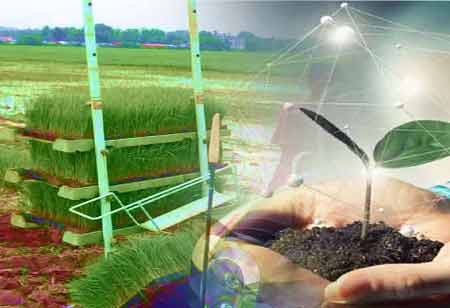Thank you for Subscribing to Agri Business Review Weekly Brief
Precision Agriculture Technologies to Advance Farming
In the future, farmers will release beagle-sized robots into their fields.

By
Agri Business Review | Wednesday, January 04, 2023
Stay ahead of the industry with exclusive feature stories on the top companies, expert insights and the latest news delivered straight to your inbox. Subscribe today.
The introduction of robots in agriculture will scurry in the shade beneath a wide range of plants, pulling weeds, planting cover crops, diagnosing plant infections, and gathering data to help farmers optimise their farms.
FREMONT, CA: In the future, farmers will release beagle-sized robots into their fields. The robots will move along a wide diversity of plants, pulling weeds, planting cover crops, diagnosing plant infections, and gathering data to help farmers optimise their farms.
The immediate needs caused by a growing population, the economic realities of conventional farming, and advancing technology converge to require precision agriculture aiming to reduce inputs and the costs and environmental problems that go with them. Every segment of the agriculture industry is interested in robotics and artificial intelligence and seek them as solutions to all the problems facing farmers today. The vision overlays existing farm practices for a comprehensive rethinking of agriculture, eliminating tractors, soil, sunlight, weather, and the outdoors as factors in farm life.
However, the promises of precision agriculture are yet to be realised as most of the systems are not in the market. Companies are making beagle-sized robots, hoping that the adoption of these robots will propel farmers well beyond precision agriculture, to think about the business of farming in a new way. Currently, most farmers focus on yield, defining success as growing more on the same amount of land. This results in industrial monocultures saturated with chemicals and tended by massive and increasingly expensive machinery. Therefore, robots help smaller farms live more in harmony with nature and grow a diversity of higher-value crops with fewer chemicals.
The crucial thing is to make it easier for farmers to focus on profit and not just on yield. Management tools that help reduce fertiliser and herbicide costs while improving the quality of the land and keeping yields high will help farmers realise more profit through fundamentally more sustainable techniques. Robots will help farmers cut costs by pulling weeds that compete with crops.
To compensate for the inevitable resistance of weeds to herbicides, suppliers blend powerful and increasingly expensive herbicidal cocktails and genetically modified seeds to be chemically resistant. This agricultural arms race traps farmers in a cycle of rising costs and threatens useful water resources.
In terms of the global challenge of feeding everyone, the current systems are required to improve. The important distinction is between field crops that are highly mechanised, like corn, and horticultural crops that require special treatment. They have a higher value and can tolerate greater investments in equipment. It is a tool that does weeding in vegetable crops and some robotic harvesting of tree fruits.





